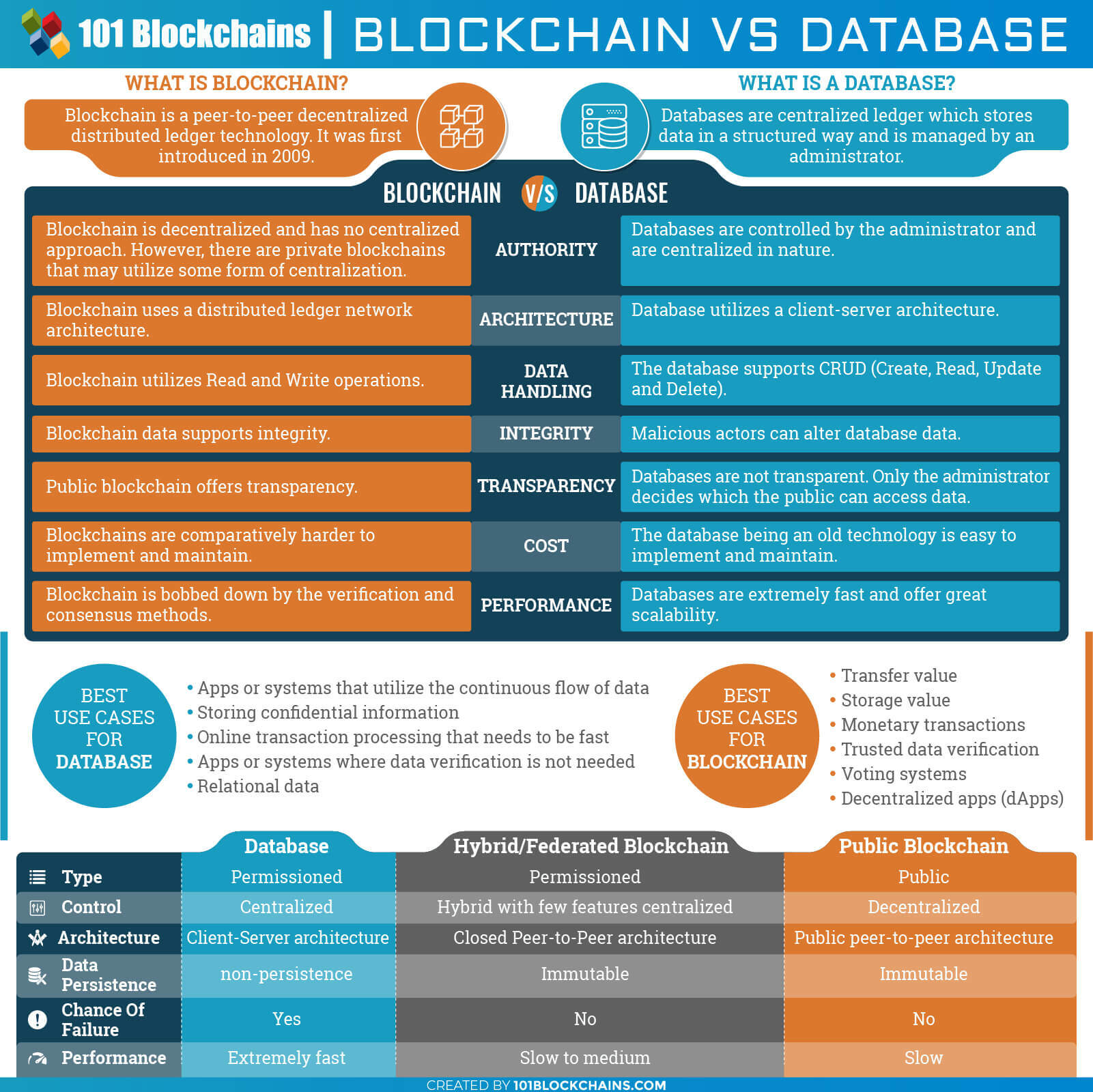What's the Difference: Blockchain vs Database?

Imagine you're in a bustling marketplace. Vendors are shouting out their prices, customers are haggling, and everyone is trying to keep track of who owes what. Now, imagine if there was a magical ledger that everyone could see and trust, where every transaction was recorded instantly and could never be altered. Welcome to the world of blockchain. But how does it differ from a traditional database? Let's dive in and explore the difference between blockchain and database.
The Basics: What is a Database?
A database is like a digital filing cabinet. It stores information in a structured format, allowing users to retrieve, update, and manage data efficiently. Think of it as a library where books (data) are organized on shelves (tables) for easy access. Databases have been the backbone of data management for decades, powering everything from your favorite e-commerce sites to your bank's transaction records.
Centralized Control
Traditional databases are centralized, meaning a single entity controls the data. This can be a company, a government, or any organization. While this setup offers efficiency and control, it also means that the data can be vulnerable to hacking, corruption, or human error. If the central authority fails, the entire system can crumble.
Data Integrity and Security
Databases rely on data integrity mechanisms like access controls and encryption to protect information. However, these measures are not foolproof. Once data is altered or deleted, it's gone forever. This is where blockchain comes in, offering a new paradigm with distributed ledger technology.
The Revolution: What is Blockchain?
Blockchain is a type of distributed ledger technology that records transactions across multiple computers. It's like a digital ledger that everyone can see but no one can alter. Each block in the chain contains a list of transactions, and once a block is added, it cannot be changed. This ensures data immutability and cryptographic security.
Decentralized Data
In a blockchain, data is not stored in one place but distributed across a network of computers. This decentralized data structure makes it incredibly resilient. There's no single point of failure, and altering data would require changing it across every copy in the network—a nearly impossible task.
Transparency and Trust
Blockchain's transparency is one of its biggest strengths. Every participant in the network can see the same information, fostering trust. This is why blockchain is often used in supply chain management, where transparency is crucial. For example, a company like Walmart uses blockchain to track the origin of its produce, ensuring food safety and data integrity.
Key Differences: Blockchain vs Database
So, what's the real difference between blockchain and database? Let's break it down:
Structure and Control
- Database: Centralized control, single point of failure.
- Blockchain: Decentralized control, no single point of failure.
Data Immutability
- Database: Data can be altered or deleted.
- Blockchain: Data is immutable once recorded.
Security
- Database: Relies on traditional security measures like encryption.
- Blockchain: Uses cryptographic security and distributed consensus.
Transparency
- Database: Access is controlled by the central authority.
- Blockchain: Transparent to all participants in the network.
Real-World Applications
Understanding the difference between blockchain and database can help you see why each is suited to different tasks. For example, a bank might use a traditional database for day-to-day transactions but a blockchain for recording high-value, irreversible transactions like property deeds.
For more insights, check out how IBM is leveraging blockchain for supply chain management here. Or, explore how Ethereum is revolutionizing smart contracts here.
Conclusion
So, what's the difference between blockchain and database? It's all about control, security, and transparency. Traditional databases offer centralized control and efficiency, while blockchain provides decentralized security and immutability. Both have their places in the digital world, and understanding their strengths can help you choose the right tool for the job.
Whether you're a tech enthusiast or a business owner, grasping these concepts can open up new possibilities. So, dive in, explore, and see how you can leverage these technologies to your advantage. The future is decentralized, and it's waiting for you to make your mark.
FAQs
1. Can blockchain replace traditional databases?
While blockchain offers many advantages, it's not a one-size-fits-all solution. Traditional databases are still essential for many applications due to their efficiency and ease of use. Blockchain is more suited for scenarios requiring high security and transparency.
2. How does blockchain ensure data integrity?
Blockchain ensures data integrity through cryptographic security and distributed consensus. Each block in the chain is cryptographically linked to the previous one, making it nearly impossible to alter data without detection.
3. What are the main use cases for blockchain?
Blockchain is used in various industries, including finance, supply chain, healthcare, and real estate. It's particularly useful for recording high-value transactions, ensuring transparency, and maintaining data immutability.
4. How does decentralized data work in blockchain?
Decentralized data in blockchain means that data is stored across a network of computers rather than in a single location. This makes the system more resilient and secure, as there's no single point of failure.
5. Is blockchain more secure than a traditional database?
Blockchain offers a different type of security through cryptographic security and distributed consensus. While traditional databases rely on encryption and access controls, blockchain's decentralized nature makes it more resistant to hacking and data tampering.
```
Belum ada Komentar untuk " What's the Difference: Blockchain vs Database?"
Posting Komentar